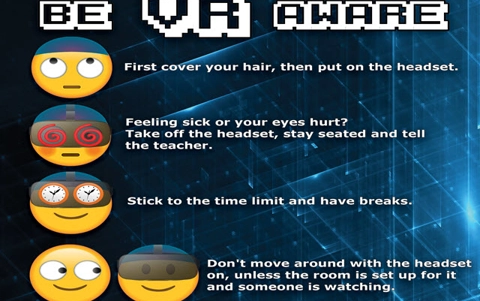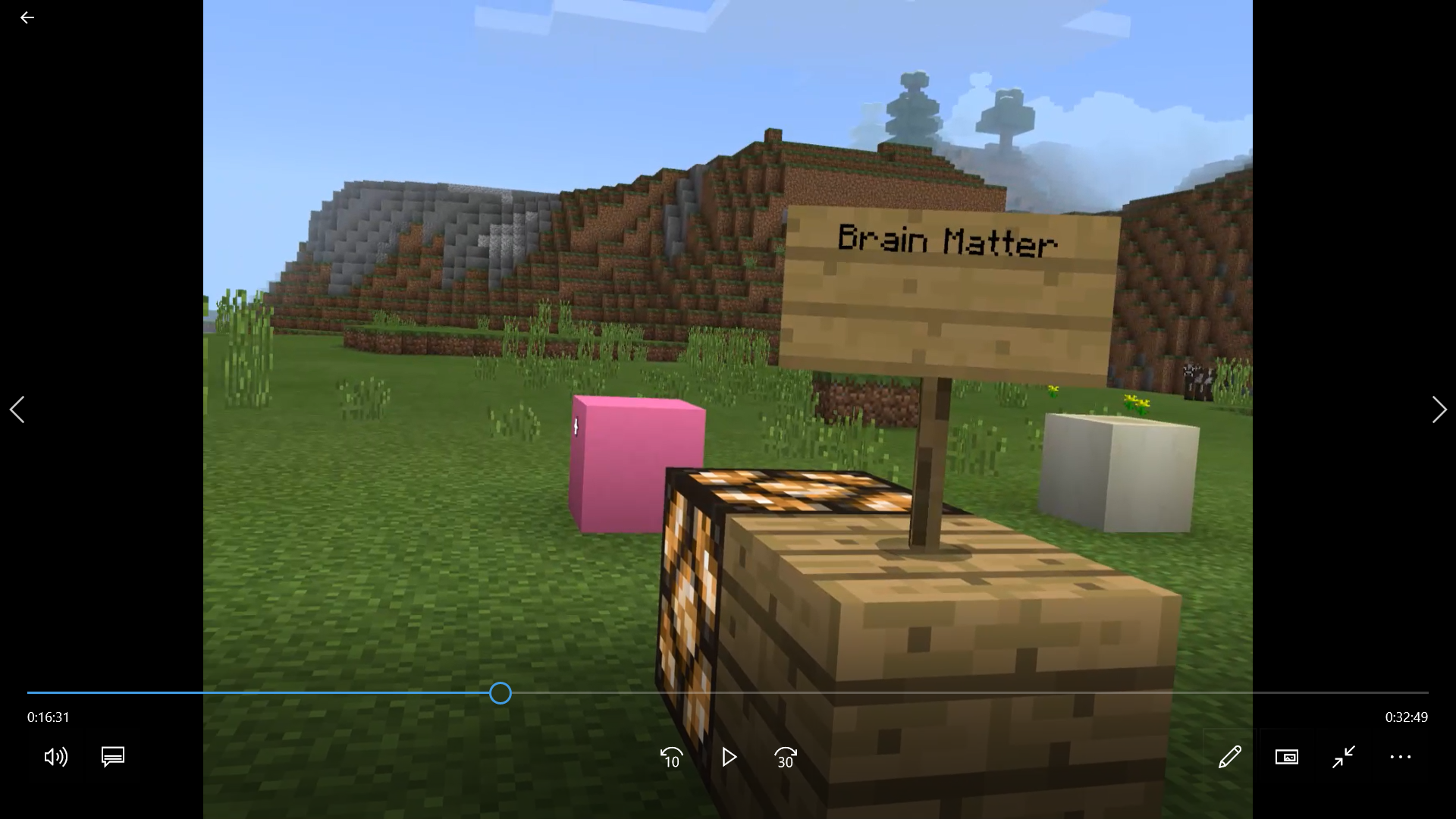The Callaghan College VR School Project

About this school story
The Callaghan College VR School Project has been a two-year partnership between Callaghan College and The University of Newcastle during 2017–2018. This project is the first of its kind anywhere in the world to embed highly immersive VR, in this case networked Oculus Rifts, in high school classrooms in a curriculum-aligned way.
Year band: 7-8, 9-10
Background
Major technology and entertainment corporations have invested heavily in developing new hardware and software capable of generating highly immersive experiences that can create an intense sense of ‘being there’ in virtual and augmented worlds. The recent global buzz surrounding the augmented reality game Pokémon Go and the release of headset devices such as Google Cardboard, Oculus Rift, Oculus Go, PlayStation VR, HoloLens and Magic Leap have reinvigorated interest in digital technologies for learning.
While desktop virtual reality (VR) has been around for decades – with studies indicating high levels of learner engagement – highly immersive VR delivered through headsets provides a unique opportunity to deploy the technology to engage students in deeper, more authentic learning (though manufacturers presently warn that highly immersive head-mounted displays such as Occulus Rift™ and HTC Vive™ are not recommended for those under 13 years).
Callaghan College, through its VR School Project, is a global leader in using highly immersive virtual reality as a 21st century learning tool to engage students in STEM learning, while developing pedagogical, practical and ethical principles for classroom practice.
To support the implementation of this collaborative project Callaghan College submitted a proposal of their project and received a $50,000 Australian Government Digital Literacy Grant.
Focus and resources
The Callaghan College VR School Project has been a two-year partnership between Callaghan College and The University of Newcastle during 2017–2018.
The aims of the project were to explore the efficacy of immersive virtual reality using head- mounted displays in:
- promoting project-based student collaboration and problem-solving in generating, designing and evaluating innovative solutions to real-world problems (ACTDIP038, ACTDIP039, ACTDIP044)
- developing deeper, more engaged learning of computational concepts and thinking (ACTDIP040, ACTDIP041) and the collection, analysis and visualisation of data (ACTDIP037)
- documenting and critically analysing the pedagogical, practical, safety and ethical issues relating to the use of immersive technologies in classrooms to produce a set of evidence-informed principles for practice and a code of ethics (ACTDIP043, ACTDIP044).
This project has included over 100 Stage 4 and 5 Science and Technology students. The project has also been supported by 12 staff members including Callaghan College teachers from a range of faculties including Science, Technology and Administration; college Principal, Graham Eather; and academics from the School of Education (University of Newcastle) led by Associate Professor Erica Southgate. The strong partnerships formed between the college and the university contributed to the project’s success.
This project is the first of its kind anywhere in the world to embed highly immersive VR, in this case networked Oculus Rift, in high school classrooms in a curriculum-aligned way. The team’s perseverance, resilience and teamwork has ensured that, for the most part, the student learning experience took advantage of the unique learning properties of immersive VR and that data was systematically collected on learning behaviours and outcomes.
The cutting edge nature of the project meant that there were technical issues to overcome. Some of these issues included:
- acquiring a space suitable for networking VR equipment with tracking systems that was in proximity to a teaching space
- the need to purchase laptop computers powerful enough to run networked Oculus Rift
- a special network set-up that occasionally dropped out or equipment that needed resetting during class time
- installing Minecraft Windows 10 Edition on Department of Education units that only have Windows Store for Business enabled
- ensuring continuity of student work undertaken in Minecraft on desktop computers or mobile devices and imported into the Windows 10 version of Minecraft for VR.
The final resources acquired and created for the project included:
- 6 Alienware laptops (3 for Wallsend, 3 for Waratah). Pertinent specifications: i7 2.8GHz processor (min i5 2.8GHz), 32GB RAM (min 16GB RAM), nVidia GTX 1070 graphics card (this card is probably the minimum specification)
- Oculus Rift headsets that run Minecraft Windows 10 Edition only. These editions include Minecraft Windows 10 Edition and Minecraft Pocket Edition. Any edition run on other devices would need to be compatible. These editions include: Minecraft Java Edition, Minecraft Education Edition, and MinecraftEDU
- student devices
- a large room and open space for safe use of VR Oculus Rift devices
- mobile WiFi modem and SIM card to run the VR units
- an alignment of junior campus Science curriculums and the creation of an online unit of work through CANVAS, as well as resources, assessments and lessons for the unit, in which the VR module was authentically embedded in The Human Body curriculum.
Implementation
During the 2018 phase of the project, students attended Science lessons as normal. Within the Human Body curriculum, a unit of work with a formative VR assessment task was created that complemented the remaining summative tasks and allowed students the choice to undertake their own research in groups in order to deepen their knowledge about specific bodily organs.
The students were asked to build models or cross-sections in VR that represented the bodily organ and demonstrated the depth of their research. They then took others on a guided tour of the organ, explaining its parts and function based on their research. Due to the possibility of cyber sickness, students were only allowed 15–20 minutes in the networked VR environment, and were not allowed to do VR if it was the final lesson of the school day. This meant that students needed to plan, in their groups, what tasks they would undertake together in VR to accomplish the assessment task.
Download a copy of this VR assessment task here.

Project outcomes
Student learning outcomes related to engagement, achievement and prevalence of on-task/off-task and metacognitive learning behaviours are currently being analysed. The qualitative data reveals many students found the task engaging, with some producing models and research of high quality. Other students were demotivated by the technical issues. The teachers implementing the project provide the following insights:
The VR School Project was, overall, successful from the technology and pedagogical points of view, despite there being numerous issues that needed to be overcome (and in some instances could not be overcome). It is not yet known if it improves student learning outcomes (as this data is currently being analysed), however there is strong anecdotal evidence that it increased engagement markedly for most students involved. This project has been a strong proof of concept for using VR in teaching and learning with real content, with real students, in real schools.
Shane Saxby – Callaghan College Waratah Rel. HT Science
I can see changes that have occurred in student learning on a qualitative level. The quantitative changes will hopefully come out in the study. The biggest change I have seen is in the depth of knowledge that students have come away with about the human body through the VR creation of models that they built.
Jiv Kilham – Callaghan College Wallsend HT Science
The VR School Project is a participatory study with teachers as co-researchers. The team publish research results from the project on the VR School website and in peer-reviewed articles, which can be found in the resources section of the website.
Click on the images to expand.
CC School Team
- Associate Professor Erica Southgate – University of Newcastle
- Dr Jill Scevak – University of Newcastle
- Dr Shamus Smith – University of Newcastle
- Graham Eather – Callaghan College Principal (now retired)
- Candece Bergin – Callaghan College Coordinator (2017)
- Amy Worth – Callaghan College Coordinator (2018)
- Shane Saxby, Ben Peters – Callaghan College Waratah Campus
- Jiv Kilham, David Summerville, Chris Cividino – Callaghan College Wallsend Campus
Teacher reflection
This reflection on our collaborative project features the voices of Dr Erica Southgate. Teacher Shane Saxby and College Coordinator Amy McConville. The video demonstrates examples of students work where they collaborated to create their virtual world showing how a human system operates.









